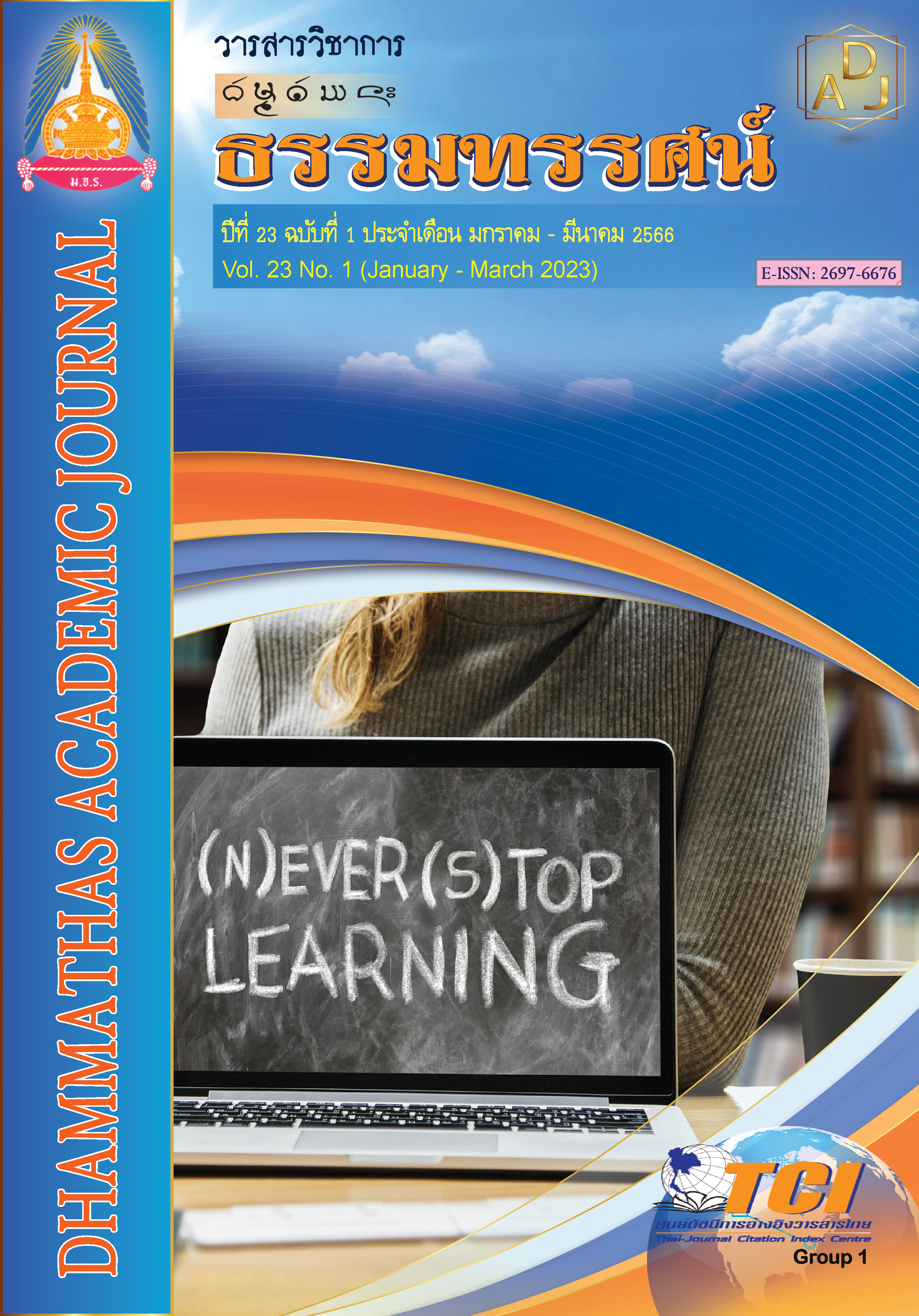The Components of Cooperation Network of the Kalasin Municipality Elderly School
Main Article Content
Abstract
The purpose of this research was 1) to study achievement condition of elderly people’s school participation management of Kalasin municipality and 2) to analyze elements on participation network for health activities of elderly people’s school of Kalasin municipality in a qualitative analysis form by studying about participation network and key elements which leads to success in the establishment of elderly people’s school of Kalasin municipality. From the study and data analysis from primary documents, in-depth interview, and focus group of elderly school stakeholders and took part in activities with three different groups of Kalasin Municipality Elderly Schools to develop a network management model for Kalasin Municipality Elderly Schools.
The results revealed that:
1. Network management should be the highest priority to be realized to succeed in elderly people’s school establishment. Realizing the importance of elderly people’s society for all section, leadership of the administrator, and participation establishment are important condition to lead the organization succeed in the elderly people’s school management.
2. The elements for participation network for health activities of elderly people’s school that can bring the organization to succeed shall compose of 4 factors which are 1) realizing their roles and responsibilities, 2) participation, 3) creation of reliability, 4) communication among the participation networks. If both two mentioned operations can be proceeded, they must be operated in a coordinated manner to succeed in the establishment of health activities network of the elderly people’s school.
Article Details

This work is licensed under a Creative Commons Attribution-NonCommercial-NoDerivatives 4.0 International License.
เพื่อให้เป็นไปตามกฎหมายลิขสิทธิ์ ผู้นิพนธ์ทุกท่านต้องลงลายมือชื่อในแบบฟอร์มใบมอบลิขสิทธิ์บทความ ให้แก่วารสารฯ พร้อมกับบทความต้นฉบับที่ได้แก้ไขครั้งสุดท้าย นอกจากนี้ ผู้นิพนธ์ทุกท่านต้องยืนยันว่าบทความ ต้นฉบับที่ส่งมาตีพิมพ์นั้น ได้ส่งมาตีพิมพ์เฉพาะในวารสาร วิชาการธรรม ทรรศน์ เพียงแห่งเดียวเท่านั้น หากมีการใช้ ภาพหรือตารางของผู้นิพนธ์อื่นที่ปรากฏในสิ่งตีพิมพ์อื่นมาแล้ว ผู้นิพนธ์ต้องขออนุญาตเจ้าของลิขสิทธิ์ก่อน พร้อมทั้ง แสดงหนังสือที่ได้รับการยินยอมต่อบรรณาธิการ ก่อนที่บทความจะได้รับการตีพิมพ์References
เกศสุดา โภคานิตย์, กีฬา หนูยศ และพระบุญเพ็ง สิทธิวงษา. (2563). บทบาทผู้นำท้องถิ่นในการบริหารจัดการโรงเรียนผู้สูงอายุแบบมีส่วนร่วมเทศบาลตำบลบ้านค่ายหมื่นแผ้ว อำเภอเมือง จังหวัดชัยภูมิ. Journal of Graduate School, Pitchayatat, Ubon Ratchathani Rajabhat University, 15(2), 1-10.
ชนิกร อินทเชื้อ และวีระวัฒน์ ปันนิตามัย. (2564). ปัจจัยที่ส่งผลต่อความสำเร็จของการสร้างเครือข่ายการจัดการศึกษาของโรงเรียนผู้สูงอายุ. วารสาร มจร สังคมศาสตร์ปริทรรศน์, 10(1), 195-209.
ชลิดา แย้มศรีสุข. (2563). การสร้างเครือข่ายโรงเรียนผู้สูงอายุจังหวัดลำปาง. วารสารวิชาการมหาวิทยาลัยราชภัฏภูเก็ต, 16(2), 19-30.
บริการสถิติข้อมูล กรมการปกครอง. (2565). สถิติผู้สูงอายุ สัญชาติไทย และมีชื่ออยู่ในทะเบียนบ้าน. เข้าถึงได้จาก
https://www.dopa.go.th/public_service/service1
พงษ์มนัส ดีอด, พระมหาวิไลศักดิ์ ปญฺญาวโร และพระครูปลัดสุรวุฒิ แสงมะโน. (2564). การเปรียบเทียบนโยบายการจ้างงานผู้สูงอายุของต่างประเทศและประเทศไทย. วารสารมหาจุฬานาครทรรศน์, 8(4), 230-243.
พระครูพิสุทธิปัญญาภิวัฒน์ และคณะ. (2565). การพัฒนารูปแบบและเครือข่ายการจัดการเรียนรู้ตลอดชีวิตของโรงเรียนผู้สูงอายุ. วารสารวิจยวิชาการ, 5(1), 11-26.
ไพบูลย์ พงษ์แสงพันธ์ และอนัฐฌา ปิ่นแก้ว. (2558). ความสำคัญของเครือข่ายเกื้อหนุนผู้สูงอายุในชุมชน. วารสารสาธารณสุข มหาวิทยาลัยบูรพา, 10(2), 109-116.
มูลนิธิสถาบันวิจัยและพัฒนาผู้สูงอายุไทย. (2564). สถานการณ์ผู้สูงอายุไทย พ.ศ. 2563. กรุงเทพฯ: อมรินทร์พริ้นติ้ง แอนด์พับลิชชิ่ง จำกัด (มหาชน).
ศรัณย์ จิระพงษ์สุวรรณ และปิยากร หวังมหาพร. (2565). ความสำเร็จในการดำเนินงานของสมาคมสภาผู้สูงอายุแห่งประเทศไทย. วารสารมหาจุฬานาครทรรศน์, 9(2), 201-211.
ศศิพัฒน์ ยอดเพชร, ภาวนา พัฒนศรี และธนิกานต์ ศักดา. (2560). การถอดบทเรียนตัวอย่างที่ดีของโรงเรียนและชมรมผู้สูงอายุที่มีกิจกรรมถ่ายทอดความรู้. กรุงเทพฯ: มูลนิธิสถาบันวิจัยและพัฒนาผู้สูงอายุไทย.
สำนักบริหาร การทะเบียนกรมการปกครอง. (2565). ระบบสารสนเทศเพื่อการบริหารสถิติประชากรรายจังหวัด. เข้าถึงได้จาก https://stat.bora.dopa.go.th/
สุวิมล แสงเรือง และคณะ. (2563). การส่งเสริมสุขภาพผู้สูงอายุ กลุ่มติดสังคมในโรงเรียนผู้สูงอายุ เทศบาลตำบลโกสุมพิสัย. วารสารสุขภาพและสิ่งแวดล้อมศึกษา, 5(3), 132-139.
อลงกต สารกาล. (2561). ความสำเร็จของการบริหารจัดการปกครองท้องถิ่นบนฐานเครือข่ายความร่วมมือ: บทเรียนจากโครงการการจัดระบบบริการรองรับสังคมผู้สูงอายุในเขตเทศบาลเมืองกาฬสินธุ์. วารสารการจัดการภาครัฐและภาคเอกชน, 27(2), 27-46.
Department of Economic and Social Affairs United Nations. (2002). World population ageing. New York: Department of Economic and Social Affairs United Nations.
Lim, E. Z. & Thompson, C. L. (2016). Measuring active ageing among older adults in Singapore. Ageing & Society, 36(9), 1853-1869.
World Health Organization. (2002). Active ageing: A policy framework (No. WHO/NMH/NPH/02.8). Switzerland: World Health Organization.

